#(the ship not ballantyne)
Text

You know, I was just going to post the bit about Ballantyne making a mistake on the thickness of coconuts and then going to live in lighthouses and with tin miners and on war ships and trawlers to be as accurate as possible in his fiction, but then the second paragraph hit me like a train
#like#okay first paragraph: he’s just like me fr!#I do that#just. go live with some Cornish tin miners in st just for 3 months why not#I’m sorry but REFORM PROSTITUTES??#’a la Gladstone’ is not an ‘a la’ you wanna be ‘a la’d with#I haven’t started deep down yet so I can’t speak to the ‘sadistic’ nature of some of his scenes#yo wtf#if I had to read it so do you#book is Ballantyne the Brave#I’ve not read it yet but.#dude#what kind of personality must someone like that have.#idk#but I read his article from his time aboard HMS THUNDERER (oooh I can’t wait to go off about that)#(the ship not ballantyne)#rm ballantyne
7 notes
·
View notes
Text
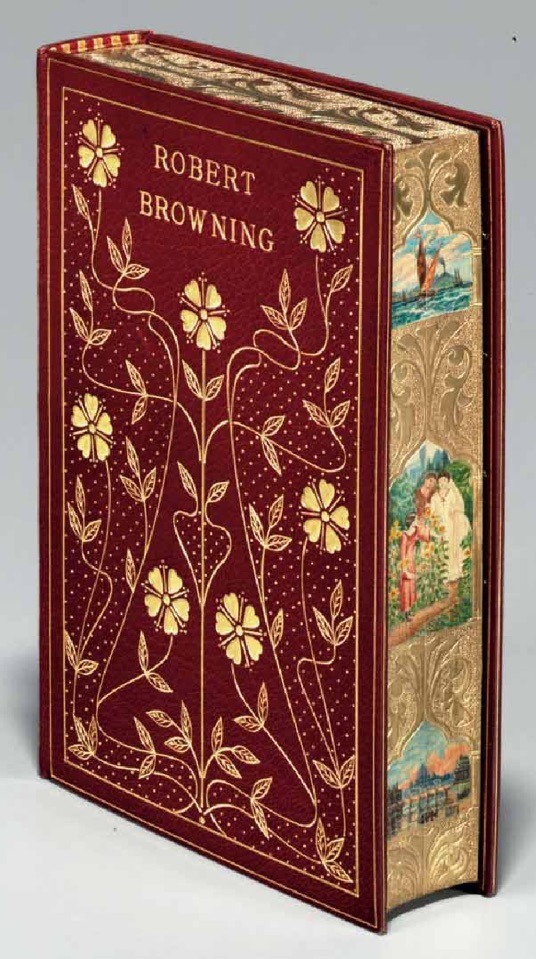
THE POETICAL WORKS OF ROBERT BROWNING WITH PORTRAITS by Robert Browning, 1812-1889. (London: Ballantyne, Hanson: 1899) Art binding in red morocco with gilt design of interweaved stems, flowers, and leaves. Gilt edges, gauffered with watercolor paintings of ships, a garden, and an aqueduct in arabesques by Fazakerley. with fore-edge and embossed cut edges.
#beautiful books#book blog#books books books#book cover#books#vintage books#illustrated book#victorian era#book design#gauffered#robert browning#poetry#fazakerley#art binding
63 notes
·
View notes
Text
A little Naval History Beginners Guide
Books I like to recommend because they are really well written, have a high information content and I personally work with them. This is only a small list, there are of course many more, but for a start these are good to begin with.
B. Lavery, Nelson’s Navy. The Ships, Men and Organisation. 1793-1815 New Edition (London 2012)
B. Ireland, Naval Warfare in the Age of Sail. War at Sea 1756-1815 ( London 2000)
N. Tracy, Nelson’s Battles. The Art of Victory in the Age of Sail (London 1996)
D.Davies, A brief history of Figthing Ships (London 1996)
A. Lambert, War at Sea in the Age of Sail 1650- 1850 (London 2000)
G. Wells, Naval Customs and traditions (London 1930)
P. Goodwin, HMS Victory, Pocket Manuel 1805 (London 2015)
J. Eastland a. I. Ballantyne, HMS Victory. First Rate 1765 (London 2011)
J. Bennett, Sailing into the Past. Learning from replica Ships (London 2009)
M. P. Smith, Terror at Sea. True Tales of shipwrecks, cannibalism, pirates, fire at sea & otherdire disasters in the 18th& 19th centuries (Maine, 1995)
J. Lowry, Fiddlers and whores. the candid memoirs of a surgeon in Nelson’s fleet, James Lowry, 1798 (London 2006)
B. Lavery, Royal Tars. The lower deck of the royal navy, 875-1850 (London 2010)
R. and L. Adkins, Jack Tar. Life in Nelson’s Navy (London 2008)
A. Bruce, Encyclopedia of Naval History (London 1998)
J. Black, Naval Power: A History of Warfare and the Sea from 1500 (London 2009)
N.A. M Rodger, The Safeguard of the Sea: A Naval History of Britain 660-1649 (London 1997)
C. L. Symonds, The U.S. Navy: A Concise History (New York 2015)
https://naval-encyclopedia.com/
C. G. Davis, American Sailing Ships: Their Plans and History (University of Michigan 1984)
B. Greenhill, The Evolution of the Wooden Ship (1988)
R. Woodman, The History of the Ship: The Comprehensive Story of Seafaring from the Earliest Times to the Present Day (1998)
Admiral W. E. Smith, The Sailor's Word-Book: An Alphabetical Digest of Nautical Terms (England 1867)
128 notes
·
View notes
Text
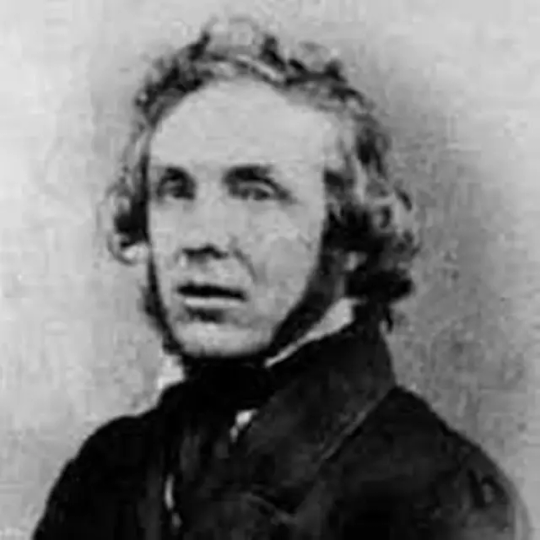



ugust 20th 1872, saw the death of the Scottish "the laureate of the nursery", William Miller.
Miller was born in Glasgow in 1810 and spent most of his boyhood in what is now the city’s Parkhead area. His ambition to become a surgeon was ended by serious illness and he was eventually apprenticed as a wood-turner. He became a skilled craftsman, developing a particular talent for cabinet-making. Early in his life he began writing poetry and children’s rhymes, mainly in the Scots language he used in everyday life.
His song Wee Willie Winkie along with other verse by Miller, first appeared in Whistle Binkie: Stories for the Fireside, a compendium of songs, in 1841, it went on to appear in further editions of that and many, many more publications since then. However it was not received well at first, indeed the editor of Whistle-Binkie,David Robertson was not keen on the grumpy figure personifying sleep and it was received with mixed opinions by Robertson’s friends. To settle the dissent, he dispatched the manuscript to R. M. Ballantyne of Edinburgh (who had himself contributed much to the publication and was the writer of over 100 books in his lifetime) who asserted, according to the Perthshire Advertiser that:
“There is not at this moment in the whole range of Scottish songs, anything more exquisite in its kind than that little Warlock of the Nursery, “Wee Willie Winkie.”
Miller suffered from ill health throughout his life and never managed to make a career solely as a poet and continued to work as a cabinet-maker and wood-turner for most of his life, most of the time from his own house, he did however have his fans, Lord Jeffrey, founder of the prestigious Edinburgh Review, being one, another was the Countess of Selkirk, and it was during one of his bouts of illness it became known she helped the erstwhile poet out when reported in The Glasgow Herald in 1846 that…:
“We learn that the Countess of Selkirk has transmitted to Mr David Robertson of this city, by the hands of the Rev.Mr Underwood of Kirkeudbright, the sum of £2, for behoof of William Miller, the author of “Wee Willie Winkie,” &c.; her Ladyship having been impressed with a favourable opinion of the poet from having perused his Nursery Rhymes. Mr Miller is so much improved, that he is now able to pursue his occupation of a wood-turner.”
In November 1871, an ulceration of the leg forced William give up his trade. Despite the increasing frailties of his body, his mind remained as sharp as ever and he continued to write and disseminate poetry, works which appeared in publications such as The Scotsman. Learning of his condition as an invalid, The Greenock Telegraph and Clyde Shipping Gazette on the 1st March 1872 urged its readers to furnish monetary contributions ‘for this deserving old poet:
WILLIAM MILLER THE POET.
“Perhaps the most delicious nursery song that has been written by a modern minstrel for the delectation of the “bairns” in these northern regions is the song of “Wee Willie Winkie.” We are sorry to hear that the writer of it has for a long time past been an invalid, and that he is in poor circumstances. William Miller has a strong claim on the public for some help to smooth his declining years. He is now upwards of sixty, and at his advanced age, afflicted as he is with serious disease of the limbs, there is no prospect of his ever being able again to resume work. By trade he is a wood turner, and he resides in Glasgow, of which city he is a native. One who knows him says that his heart seems still young, his mind still vigorous; but he feels his position irksome and his spirit galled that he cannot now, as formerly, earn by the swear of his brow the bread of independence.”
You have to love the language of the day used in these newspapers!
The following July, Miller stayed at Blantyre for a time, hoping that the town’s airs – the settlement was 8 miles from Glasgow – would reinvigorate him. The trip proved futile and he was soon returned to his son’s house in the city, having suffered a paralysis of the lower limbs. He passed away, destitute, at the age of 62 on the 20th August, 1872.
The poet subsequently received a number of obituary notices in the newspapers lamenting the loss of this Scottish talent. The account below, in The Greenock Telegraph and Clyde Shipping Gazette on the 22nd August, 1872), reports the grim news:
DEATH OF WILLIAM MILLER, THE POET
“The death is announced of William Miller, the nursery poet. He was born in Glasgow in August, 1810. He was early apprenticed to a wood turner, and by diligent application to business made himself one of the best workmen of his craft; and even in his later years there were few who could equal him in the quality of his work. It is, however, as a poet that he is known to fame. In his early youth he published several pieces in the Day and other newspapers; but from the fact that no record of these productions was observed, it is impossible to know when they issued from his pen.
The first thing that brought him into public notice was the publication of the nursery song “Willie Winkie.” The MS. of this song was sent to Mr. Ballantine in Edinburgh, who gave it unqualified praise, as being the very best poem of its kind that he had ever seen. This led to the publication of the poem, and it at once attracted a large amount of attention. This was followed by a number of other pieces of a similar description, all of which were received with great favour, and led to the author’s acquaintance with Lord Jeffrey and other gentlemen of literary tastes.
The best of his nursery songs which have obtained for him the well-earned title of the Laureate of the nursery were all written before he was 36 years of age; but it was not till 1863 that, at the request of several friends, he collected together and published a small volume, entitled “Nursery Songs and other Poems.” It had a wide circulation and has earned for the author a reputation that will never decay.
Miller is buried in Tollcross Cemetery in a plot that does not bear his name a sad state of affairs that led to friends and admirers raising a memorial stone by public subscription and it stands in the Glasgow Necropolis, near the Bridge of Sighs.
In 2009, Glasgow City Council unveiled a tribute to the poet at his former dwelling, 4 Ark Lane in Dennistoun, erecting a bronze plaque on the wall of the Tennent’s Brewery which now sits on the site of William Miller’s house. A blue plaque in the Trongate also serves as a quirky tribute to his most famous creation, declaring that ‘Wee Willie Winkie was spotted here in his nightgown’ in 1841.
It is clear that, even now, William Miller’s pyjama-clad figure still urges children to get into their beds and sleep as a nursery song learnt and replayed the world over
Here is the Scots version of ‘Wee Willie Winkie,’ a rhyme anglicised very soon after its publication:
Wee Willie Winkie runs through the toon,
Up stairs and doon stairs, in his nicht-goon,
Tirling at the window, cryin’ at the lock,
Are the weans in their bed, for it’s now ten o’clock?
Hey, Willie Winkie, are ye coming ben?
The cat’s singing grey thrums to the sleeping hen,
The dog’s spelder’d on the floor, and disna gie a cheep,
But here’s a waukrife laddie that winna fa’ asleep.
Onything but sleep, you rogue, glow’ring like the mune,
Rattling in an airn jug wi’ an airn spoone,
Rumbling, tumbling round about, crawing like a cock,
Skirlin’ like a kenna-what, wauk’ning sleeping fock.
Hey, Willie Winkie – the wean’s in a creel,
Wambling aff a bodie’s knee like a very eel,
Ruggin’ at the cat’s lug, and raveling a’ her thrums-
Hey, Willie Winkie – see, there he comes!’
Wearied is the mither that has a stoorie wean,
A wee stumple stoussie, that canna rin his lane,
That has a battle aye wi’ sleep before he’ll close an ee
But a kiss frae aff his rosy lips gies strength anew to me.
12 notes
·
View notes
Text
Eastern Cape Specialist
Jessamy Pedro receives an Honours Award for Netball. The prizes awarded at Awards Ceremonies which are held every time period type a half of the formal recognition of pupil achievement at Kingswood College. During his time in South Africa and significantly in the speeches that he gave shortly earlier than returning to England on the finish of 1905, Hele-Shaw expressed sturdy opinions about the role of a South African university. In one lecture, for instance, he expressed himself as being typically happy with progress in the TTI , which he hoped that one day would become a 'modern college', the actual core of which was mental development.
Open and secure data platforms allow Sarah to confirm the diagnosis, order the mandatory prescription, and have it delivered to their house via drone. Or perhaps the ear an infection never materializes as a end result of the problem is identified and addressed earlier than symptoms seem. In this case, a prescription may not be needed in any respect because of the early intervention. This approach empowers Sarah to behave rapidly and address well being points at residence, while dr greg hough allowing physicians to focus on complex instances that really require human intervention. Interoperable, always-on knowledge will promote nearer collaboration among well being care stakeholders, and new combos of providers shall be offered by present suppliers and new entrants . But these modifications would require those that administer Medicaid packages to assume in new ways to effectively interact with these evolving enterprise fashions.
It was a hallowed day and an extraordinary week. And the tip did reside up to all of the expectations. A special voyage into the the deep blue sea with great sightings of the birds and mammals inhabiting it, while having fun with the consolation of professional companies on a nicely run ship. Was somewhat apprehensive about going through dr greg hough the Roaring Forties, but oh, what an expertise seeing Prince Edward Island through the mist and the hundreds of seabirds gliding past us. So glad that I can say “we were amongst the privileged few” to embark on this awesome “Flock to Marion”. Thank you BLSA, MSC and all these involved in making it happen in spite of all the obstacles thrown in your method.
We started our Winter vacation last Friday, and what a well-deserved break this might be for our pupils and workers alike. We spoke to Mrs Amy Ballantyne lately to share her teaching philosophy with us and to speak to her about how they have tackled on-line learning in the Foundation Phase on the Junior School. We chatted to our Head of Senior Academic, Mrs Tracy van Molendorff last week to learn the way this time period has unfolded in the digital space. While heading into an internet examination period did not come without its challenges, Kingswood has never backed down from a problem. Our campus has been slowly reawakened with the return of numerous pupils for our annual Grade 12 Maths Pupils. The camp happened from Sunday twenty second August till Tuesday 24nd August 2021.
Localized well being hubs will play a bigger position in the health care of the long run. A nationwide database of Medicaid and health care information will exist, seen to all well being care stakeholders, including Medicaid sufferers. As the rest of the well being care trade transforms, what does this change imply for Medicaid beneficiaries and Medicaid agencies? Medicaid’s mission should still be to improve the well being of individuals with disabilities and lower incomes to enable them to get the well being care companies they want, but the way Medicaid accomplishes this can change. I am so glad I was lucky sufficient to join this truly particular expertise with BirdLife South Africa, 2000kms out at sea with 1500+ fellow birders.
Here’s hoping to another Flock journey in the next couple of years. Birdlife SA all the time endeavours to advertise birds and birding in SA. This was a fantastic example of initiative and exhausting work. Congratulations on the success of the enterprise.
Words cannot do justice to the feeling of watching tons of of seabirds glide effortlessly around the boat, living out their days in a part of the world most people will never have the privilege to take pleasure in. Being in a place to experience that remote and rarely visited region, observe incredible wildlife, and contribute to its future protection and conservation, made this the most amazing trip. Birdlife SA’s staff had been unflappable and made sure we all surfed the many waves of uncertainty together. I daresay they taught MSC a factor or two and will have inspired them to do very completely different sorts of `adventure’ cruises in future.
0 notes
Link
Check out this listing I just added to my Poshmark closet: The Angels Weep (Ballantyne Series, Book 3) by Wilbur Smith (Vintage, Rare Find).
0 notes
Text
H.M.S. London :: Iain Ballantyne
H.M.S. London :: Iain Ballantyne
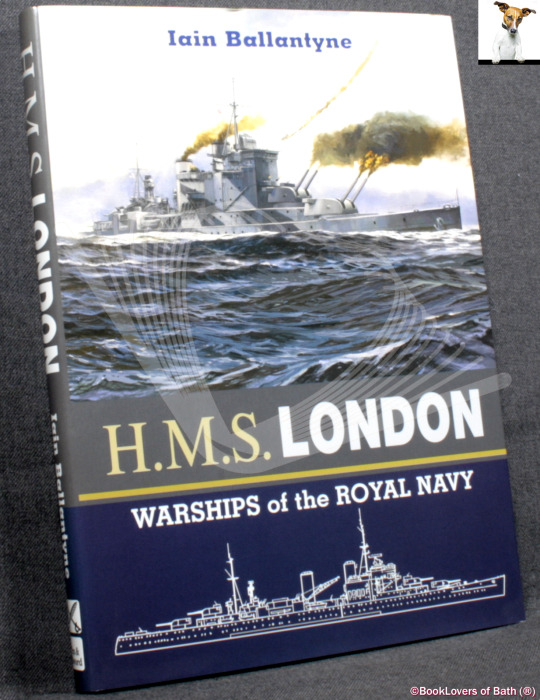
H.M.S. London :: Iain Ballantyne soon to be presented for sale on the fabulous BookLovers of Bath web site!
Barnsley: Leo Cooper, 2003, Hardback in dust wrapper.
Number 2 in the series. Contains: Black & white photographs; Maps; List of sources;
From the cover: Warships named HMS Londonhave been associated with some of the most triumphant and controversial episodes in British naval history. In…
View On WordPress
#0-850-52843-7#bombarding sevastopol#books in the warships of the royal navy series#books written by iain ballantyne#convoy pq17#first edition books#hunt for bismarck#london ship history#mutiny spithead#naval history#royal navy history#warships history#yangtze
0 notes
Text
un going aside
—Sound, instead of
take an un going through
the Narrows, the most usual and 1
If it be otherwise, I, an unlearned,
an un going to 2 and
an un going on,
at the bottom of which 3
imagine an un going into 4
an un going at eventide to their narrow 5
sonnets he claimed; and
there is an un going aside, says :
doubted difficulty in understanding how a 6
book issued under such auspices would meet with an un
going, singing 7
without going at an un
going to the Convention 8
Secret drillings are the office,
is it because I had an un going on there 9
and proved an un going by 10
and a steamer coming down the river,
and An ungoing boat on the Ohio [ ] may
attempting to cheer across [ ] the signal
which side of the down boat she will tug 11
conscious of an un going to 12 Boole
miles, [ ] almost an ungoing 20 or
25 miles to the port. If the line 13
if you are history I think we have to depart from an un
going to assume 14
A trapper may suffer from an un going 15
style of play, for he is an un
going along blithely figuring 16
an ungoing of the ships, but mostly intent 17
And then ensued an ungoing — ’m,
if you’ve decided to jump emptory
Again she thrilled him. Yet
socially silent hour or 18
sanction, is not only an un going
authorities are sound and should 19
an un going to the bow 20
no doors and windows. An ungoing in . It was 21
and closed the door behind her
An un going to be 22
In this case, I hoped to mainexplain anything that did not pertain
this reputation of getting results, fectly
clear to me [ ] was an un going 23
be an un going 24
and a mystic intuition of an ungoing splurge be a poor substitute for the detailed work 25
in this city that was reported as an un
going to make up 26
un going paragraphs 27
versial therapy and there is an ungoing 28
sources (nearly all cross-column misconstruals)
1
ex Willard Phillips. A Treatise on the Law of Insurance (1823) : 195
(Chapter 12, “Deviation and Change of the Risk”)
unconnected errata (at p538, same volume) —
Page 392, line 21 from botton, after ‘does’; read ‘not.’
2
ex The History of Clarissa Harlowe, Letter 53 (To Miss Howe, containing a draft (from which this passage) to Mr James Harlowe),
in The Novels of Samuel Richardson... in three volumes. (Ballantyne’s Novelist’s Library; London, 1824) : 634
3
ex “Reminiscences of a Tempest-tost Life” in Putnam’s Magazine 6 (October 1855) : 416-424 (419)
4
ex “Ground Game and Game Laws,” in The Farmer’s Magazine (London; December 1869) : 522-524 (523)
5
ex “On Gardening,” by “An Optimist,” The Living Age 115 (November 2, 1872) : 303-313 (310)
(from The Cornhill Magazine (October 1872) : 424)
6
ex J. V. P., “Who wrote ‘Shakspere’?” in Fraser’s Magazine (August 1874) : 164-178 (167)
7
ex (via chaotic cross-column misreads), W. J. Patten (Bangor, Maine; June 10th, 1878). “A National Church Music.” In [John Sullivan] Dwight’s Journal of Music 38:6 (Boston; June 22, 1878) : 251
8
three-column OCR chaos involving a description of the upcoming The Cleveland Convention, and a report of a quick passage of an English troop-ship through the Suez Canal (fourteen hours, between the hours mentioned above), ex Engineering News (June 7, 1879) : 177
9
ex Mister Harrington’s address to the House (May 28, 1883) on the matter of Prevention of Crime (Ireland) Act, 1882—Seizure of the “Kerry Sentinel,” involving Messrs Parnell, Trevelyan, and (Edward) Harrington owner of “The Kerry Sentinel,” in The Parliamentary Debates (Authorized Edition; Great Britain, 1883) : 969-70
on Edward Harrington (c1852-1902), consult
wikipedia;
DIB (Dictionary of Irish Biography); and, for (fascinating) context,
wikipedia on the Land War
10
ex Charles E. Clay, “History of the State Island Athletic Club,” in Outing (An illustrated monthly magazine of recreation) 11:4 (January 1888) : 340-351 (343)
followed by C. Bowyer Vaux. “Aerial Messengers” (on use of pigeons in yacht races)
11
ex index (bottom of page), in The Federal Cases / comprising cases argued and determined in the Circuit and District Courts of the United States. Book 21 . Runaways—Shore, Case No. 12,137—Case No. 12,805 (St. Paul; 1896) : 1351
OCR misread of “upgoing”, “cheer” for printed “sheer” (which is likely a typographic error for “steer”) + OCR cross-column misread
12
ex Julie M. Lippmann (1864-1952), “Mrs. Chisholm’s Companion,” in The Smart Set : A Magazine of Cleverness 8:1 (September 1902) : 135-139 (137)
author at wikipedia
13
ex South Australia. Parliament. Debates in the House of Assembly (First session of the Eithteeenth Parliament of South Australia) Booleroo Centre Railway Bill. (October 19, 1905) : 438
14
from preview snippet only (nothing on landing page),
The Parliamentary Debates (official Report).: House of Commons, Contains the 4th session of the 28th Parliament through the 1st session of the 48th Parliament. Great Britain.
15
ex Raymond S. Spears. “Opportunities for Trappers Incomes, No. 1,” in Hunter-trader-trapper 22:5 (August 1911) : 27-30 (28)
16
ex Ed. A. Goewey. “An Old Fan Says:” (illustrated by “Zim”), in Leslie’s Illustrated Weekly Newspaper 118 (April 30, 1914) : 418
which led (on following page 419) to Chief Red Eagle (1885-1972) his “Chased by a Moose, A Vacation Story.”
on Chief Red Eagle (Henry Perley) consult wikipedia
17
from preview snippet only (nothing on landing page),
The Sunday at Home (Religious Tract Society, 1914)
18
snippet (nothing on landing page), Collier’s 56 (1916) : 23
the whole —
“Will I ?” she retorted with mocking awkward reluctance at last , “are you manner were both pleading and per- curtness . And then ensued an ungoing — ’m , if you've decided to jump emptory Again she thrilled him . Yet socially silent hour or ...”
19
ex “Memphis St. Ry. Co. v. Rapid Transit Co.,” Supreme Court of Tennessee. Oct. 23, 1915 (appeal, finding reversed); in The Southwestern Reporter 179 / November 3 — December 15, 1915. (St. Paul, 1916) : 639
20
ex (preview snippet only, but found in different scan linked here) “Discovering the Union Label,” by P. J. Doyle (from The Carpenter), in The Shoe Workers’ Journal 18:8 (August 1917) : 8
21
ex Gertrude Henderson (with illustrations by O. F. Howard), “Scheherazade of the Factory,” The Century 99:3 (January 1920): 427-31 (428)
22
ex preview snippet, nothing on landing page (and title suspect), Heart’s International (1920)
note —
this magazine seems to have been a predecessor to Cosmpolitan
1911: Hearst’s International: “World To-Day”, a middling monthly magazine, was acquired to attack politicians against whom Hearst waged war, namely Theodore Roosevelt, Woodrow Wilson, and William Jennings Bryan. He renamed it “Hearst’s magazine” in Apr.1912, shortened it to “Hearst’s” in Jun.1914, and finally entitled it as “Hearst’s International” in May.1922.
from wikicorporates timelines for Hearst Communications.
scans of several numbers (as well as books published by a related entity) available via archive.org
23
ex “The Battle of Booby’s Bluffs,” By Major Single List, in Infantry Journal 19:4 (October 1921) : 427-433
the whole —
“In this case , I hoped to mainexplain anything that did not seem pertain this reputation of getting results , fectly clear to me . and I felt that I stood an excellent I promptly saw that my battalion was chance , because Colonel R was an ungoing to [have the hardest nut to crack]”
24
ex Charles F. Howell, “Marine Insurance / Cuban Conditions Bad,” in The Weekly Underwriter 104:11 (March 12, 1921) : 428
aside —
first page of each number features a spectacular photograph of a disaster (e.g., grain elevator explosion; train wreck; fire), together with monitory details.
25
misprint in this edition (corrected in later), John Dewey, Human Nature and Conduct: An Introduction to Social Psychology (1922) : 74
26
ex discussion following John J. Moren (Louisville), “Diagnosis and Treatment of Encephalitis,” and cross-column misread involving G. A. Hendon (Louisville), “Cancer of the Large Intestine,” in Kentucky Medical Journal (March 1922) : 204
27
ex High Egg Production by Individual Hens, Pens and Flocks (Reliable Poultry Journal, 1922) : 91
specifically, ex Part II, Chapter III, “A high-producing strain of barred rocks and how it was bred / Methods of breeding that have enabled J. W. Parks of Altoona, Pa., to develop a remarkably productive strain and to win financial independence — interesting examples of pen and flock production — Methods of line breeding and “Tracing Back” by pedigrees.” By Grant M. Curtiss, Editor of Reliable Poultry Journal
28
ex confused snippet preview (nothing at landing),
Acta Chirurgica Scandinavica: Supplementum (most definltely not 1922, though so dated)
in full : “of these facversial therapy and there is an ungoing debate tors .”
—
all tagged ungoings
6 notes
·
View notes
Photo
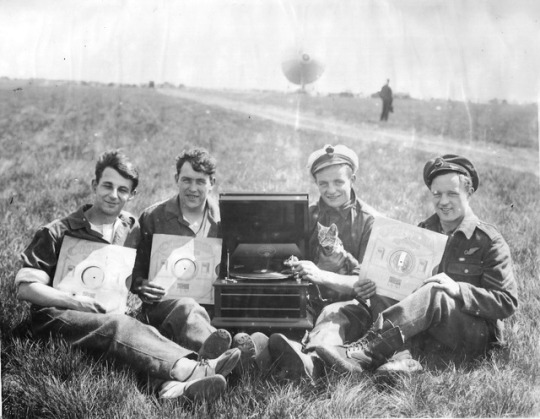
“Entertainment and comfort”
‘On July 2 1919, a British dirigible R-34, the first airship to travel across the Atlantic from east to west, left East Fortune in Scotland, and landed in Long Island, New York, July 6 1919.
Before starting on the voyage, William Ballantyne, a crew member, had been removed to make room for an American observer. But he did not want to miss out and two hours before the flight, Ballantyne managed to climb back on board the ship, and hid in the darkness of the ship. He had also carried with him, the crews' mascot, a small kitten called "Whoopsie". But the cramped conditions and the smell of the gas made him nauseous, and forced him to give up and come out of hiding.
Having been quite ill for some time, the dishevelled stowaway was rested on one of the hammocks, while Whoopsie the kitty worked her passage throughout the rest of the voyage, providing entertainment and comfort to the other crew members.’
R34 - The Record Breaker
Photos: July 1919, part of the R-34 crew, with William Ballantyne (second from left), Woopsie the kitten, and the airship’s gramophone -- R34 - The Record Breaker
Note: interesting grainy snapshots of the British airship R34 parked on Roosevelt Field airfield near Mineola, New York, in July 1919
10 notes
·
View notes
Text
wow I haven’t been properly on Tumblr in a hot minute but thank you @alexdanverswrites for never failing to include me in something lmao.

Relationship status: single and never ready to mingle. so hermit life it is!
Favorite color: I’ll never stop talking about the gorgeousness of dodger blue.
Top three ships: uh. no lie, I haven’t really concentrated on media for a while so this is just timeless stuff for me – Hades/Persephone, Dick Grayson/Barbara Gordon, and Bigby Wolf/Snow White.
Lipstick or chapstick: chapstick purely because that’s the only one of the two I wear. mostly due to wintertime being actual hell for my lips. something about the dryness with the coldness being the worst for a person that already has to moisturize daily.
Last song: Santa Barbara by Nick Jonas.
Last movie: George Ballantyne’s Nutracker. you know, the one from the 90s with baby Macaulay Culkin being a semi-decent ballet dancer and the Nutcracker. I really wanted to see if it wasn’t a weird fever dream a friend and I shared. voila, it wasn’t.
not tagging anyone in particular, just feel free to steal this from me~
3 notes
·
View notes
Link
A fascinating and comprehensive account of how an initially ineffectual underwater boat—originally derided and loathed in equal measure—evolved into the most powerful and terrifying vessel ever invented—with enough destructive power to end all life on Earth. Iain Ballantyne considers the key episodes of submarine warfare and vividly describes the stories of brave individuals who have risked their lives under the sea, often with fatal consequences. His analysis of underwater conflict begins with Archimedes discovering the Principle of Buoyancy. Our clandestine journey then moves through the centuries and focuses on prolific characters with deathly motives, including David Bushnell, who in 1775 in America devised the first combat submarine with the idea of attacking the British. Today, nuclear-powered submarines are among the most complex, costly ships in existence. Armed with nuclear weapons, they have the ability to destroy millions of lives: they are the most powerful warships ever created. At the heart of this thrilling narrative lurks danger and power as we discover warfare's murkiest secrets.
1 note
·
View note
Photo




August 20th 1872, saw the death of the Scottish "the laureate of the nursery", William Miller.
Miller was born in Glasgow in 1810 and spent most of his boyhood in what is now the city’s Parkhead area. His ambition to become a surgeon was ended by serious illness and he was eventually apprenticed as a wood-turner. He became a skilled craftsman, developing a particular talent for cabinet-making. Early in his life he began writing poetry and children’s rhymes, mainly in the Scots language he used in everyday life.
His song Wee Willie Winkie along with other verse by Miller, first appeared in Whistle Binkie: Stories for the Fireside, a compendium of songs, in 1841, it went on to appear in further editions of that and many, many more publications since then. However it was not received well at first, indeed the editor of Whistle-Binkie,David Robertson was not keen on the grumpy figure personifying sleep and it was received with mixed opinions by Robertson’s friends. To settle the dissent, he dispatched the manuscript to R. M. Ballantyne of Edinburgh (who had himself contributed much to the publication and was the writer of over 100 books in his lifetime) who asserted, according to the Perthshire Advertiser that:
“There is not at this moment in the whole range of Scottish songs, anything more exquisite in its kind than that little Warlock of the Nursery, “Wee Willie Winkie.”
Miller suffered from ill health throughout his life and never managed to make a career solely as a poet and continued to work as a cabinet-maker and wood-turner for most of his life, most of the time from his own house, he did however have his fans, Lord Jeffrey, founder of the prestigious Edinburgh Review, being one, another was the Countess of Selkirk, and it was during one of his bouts of illness it became known she helped the erstwhile poet out when reported in The Glasgow Herald in 1846 that…:
“We learn that the Countess of Selkirk has transmitted to Mr David Robertson of this city, by the hands of the Rev.Mr Underwood of Kirkeudbright, the sum of £2, for behoof of William Miller, the author of “Wee Willie Winkie,” &c.; her Ladyship having been impressed with a favourable opinion of the poet from having perused his Nursery Rhymes. Mr Miller is so much improved, that he is now able to pursue his occupation of a wood-turner.”
In November 1871, an ulceration of the leg forced William give up his trade. Despite the increasing frailties of his body, his mind remained as sharp as ever and he continued to write and disseminate poetry, works which appeared in publications such as The Scotsman. Learning of his condition as an invalid, The Greenock Telegraph and Clyde Shipping Gazette on the 1st March 1872 urged its readers to furnish monetary contributions ‘for this deserving old poet:
WILLIAM MILLER THE POET.
“Perhaps the most delicious nursery song that has been written by a modern minstrel for the delectation of the “bairns” in these northern regions is the song of “Wee Willie Winkie.” We are sorry to hear that the writer of it has for a long time past been an invalid, and that he is in poor circumstances. William Miller has a strong claim on the public for some help to smooth his declining years. He is now upwards of sixty, and at his advanced age, afflicted as he is with serious disease of the limbs, there is no prospect of his ever being able again to resume work. By trade he is a wood turner, and he resides in Glasgow, of which city he is a native. One who knows him says that his heart seems still young, his mind still vigorous; but he feels his position irksome and his spirit galled that he cannot now, as formerly, earn by the swear of his brow the bread of independence.”
You have to love the language of the day used in these newspapers!
The following July, Miller stayed at Blantyre for a time, hoping that the town’s airs – the settlement was 8 miles from Glasgow – would reinvigorate him. The trip proved futile and he was soon returned to his son’s house in the city, having suffered a paralysis of the lower limbs. He passed away, destitute, at the age of 62 on the 20th August, 1872.
The poet subsequently received a number of obituary notices in the newspapers lamenting the loss of this Scottish talent. The account below, in The Greenock Telegraph and Clyde Shipping Gazette on the 22nd August, 1872), reports the grim news:
DEATH OF WILLIAM MILLER, THE POET
“The death is announced of William Miller, the nursery poet. He was born in Glasgow in August, 1810. He was early apprenticed to a wood turner, and by diligent application to business made himself one of the best workmen of his craft; and even in his later years there were few who could equal him in the quality of his work. It is, however, as a poet that he is known to fame. In his early youth he published several pieces in the Day and other newspapers; but from the fact that no record of these productions was observed, it is impossible to know when they issued from his pen.
The first thing that brought him into public notice was the publication of the nursery song “Willie Winkie.” The MS. of this song was sent to Mr. Ballantine in Edinburgh, who gave it unqualified praise, as being the very best poem of its kind that he had ever seen. This led to the publication of the poem, and it at once attracted a large amount of attention. This was followed by a number of other pieces of a similar description, all of which were received with great favour, and led to the author’s acquaintance with Lord Jeffrey and other gentlemen of literary tastes.
The best of his nursery songs which have obtained for him the well-earned title of the Laureate of the nursery were all written before he was 36 years of age; but it was not till 1863 that, at the request of several friends, he collected together and published a small volume, entitled “Nursery Songs and other Poems.” It had a wide circulation and has earned for the author a reputation that will never decay.
Miller is buried in Tollcross Cemetery in a plot that does not bear his name a sad state of affairs that led to friends and admirers raising a memorial stone by public subscription and it stands in the Glasgow Necropolis, near the Bridge of Sighs.
In 2009, Glasgow City Council unveiled a tribute to the poet at his former dwelling, 4 Ark Lane in Dennistoun, erecting a bronze plaque on the wall of the Tennent’s Brewery which now sits on the site of William Miller’s house. A blue plaque in the Trongate also serves as a quirky tribute to his most famous creation, declaring that ‘Wee Willie Winkie was spotted here in his nightgown’ in 1841.
It is clear that, even now, William Miller’s pyjama-clad figure still urges children to get into their beds and sleep as a nursery song learnt and replayed the world over
Here is the Scots version of ‘Wee Willie Winkie,’ a rhyme anglicised very soon after its publication:
Wee Willie Winkie runs through the toon,
Up stairs and doon stairs, in his nicht-goon,
Tirling at the window, cryin’ at the lock,
Are the weans in their bed, for it’s now ten o’clock?
Hey, Willie Winkie, are ye coming ben?
The cat’s singing grey thrums to the sleeping hen,
The dog’s spelder’d on the floor, and disna gie a cheep,
But here’s a waukrife laddie that winna fa’ asleep.
Onything but sleep, you rogue, glow’ring like the mune,
Rattling in an airn jug wi’ an airn spoone,
Rumbling, tumbling round about, crawing like a cock,
Skirlin’ like a kenna-what, wauk’ning sleeping fock.
Hey, Willie Winkie – the wean’s in a creel,
Wambling aff a bodie’s knee like a very eel,
Ruggin’ at the cat’s lug, and raveling a’ her thrums-
Hey, Willie Winkie – see, there he comes!’
Wearied is the mither that has a stoorie wean,
A wee stumple stoussie, that canna rin his lane,
That has a battle aye wi’ sleep before he’ll close an ee
But a kiss frae aff his rosy lips gies strength anew to me.
42 notes
·
View notes
Photo
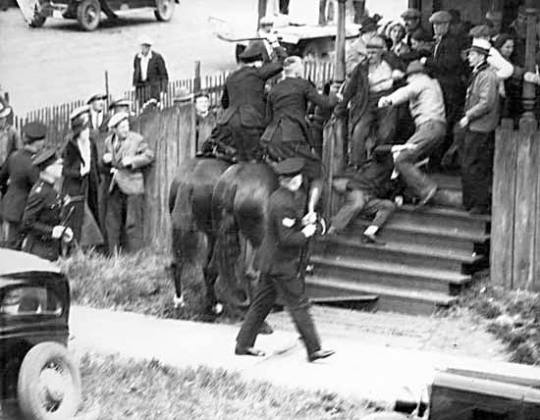
On this day, 18 June 1935, around 1,000 locked out dockers and their supporters were violently attacked by hundreds of armed police and Mounties in Vancouver, Canada as they went to picket scabs unloading ships at Ballantyne pier. Several workers were hospitalised, including one who was shot in the legs while attempting to flee. After the attack, the strike faltered, however it laid the path for the founding of a new, independent, union whose members won many strikes in subsequent years. This is a history of the battle: https://ift.tt/2JXk3uO https://ift.tt/2JYt6yL
18 notes
·
View notes
Link
Check out this listing I just added to my Poshmark closet: The Angels Weep (Ballantyne Series, Book 3) by Wilbur Smith (Vintage, Rare Find).
0 notes
Photo

Announcing our Annual Openings Collective Art Auction benefitting scholarships for our Summer Artist Residency program - it's live online now until November 9th! Pieces ship internationally and include works by our collective members based in the U.S. and abroad. Have a look at our collection using the link in our bio! Works imaged: "Check Mate", 2018, Ryan Hollaway. "Reverie", 2017, Loretta Lomanto. "My Friend’s Funeral", 2017, Christina Ballantyne. @openingsny @paddle8 #nycart #art #artauction #benefitauction #painting #sculpture #drawing #photography #collage #mixedmedia #artcollector #gift #contemporaryartists #internationalart #artistsofinstagram #paddle8 @berubelondon @madhininirmal @debra_jenks @younkinstudio @lorettalomanto @shangguanine @journeytokalon @erinkdanna @norma_markley @suzannekathaleen @santellaanthony @fpsabatte @joel.carreiro @markatteberystudio @jenncacciolastudio @jamesrazko @oaktreesociety @maria_and_bunny @margeauxwalter @whippedhoney @georgiaelrod @maia_artist_fitnesslifestyle @baby_rute @peter_hoffmeister @dionis_o_studio @denisepenizzotto @caviar_____complex @erichibit @joachim_marx @oksana.pro.art @katerinalanfranco @ashleygarrettny @lafleurchien @robert__aitchison @z_captures @brian_wood_at_nite@dannylicul @cavaglass_new_york_glass_art @ifoundkeena @juliawhitneybarnes @nlblackandwhite @ericjiajuleestudio @katierubright @_sleepyfoot_ @sofi_bersa @kristonecapistrano @alexanderatkinson @wayneadamsstudio @yeonjinkim4 @belfineart @malin.b.abrahamsson (at New York, New York) https://www.instagram.com/p/BpaLRh9lGCm/?utm_source=ig_tumblr_share&igshid=1emc8kbw4rgp
#nycart#art#artauction#benefitauction#painting#sculpture#drawing#photography#collage#mixedmedia#artcollector#gift#contemporaryartists#internationalart#artistsofinstagram#paddle8
1 note
·
View note
Photo
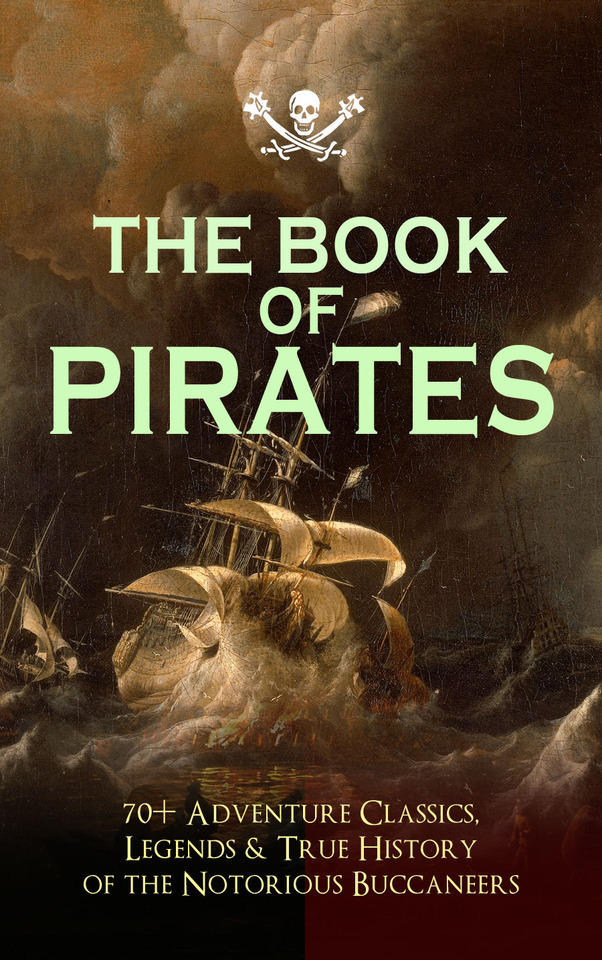

Just got this new book! I am beyond excited to delve into these stories...
Enjoy the best sea adventures, treasure hunt tales and bloody battles, along with learning the truth behind the legends, the real life stories that inspired so many writers and produced so many beloved classics: History of the Robberies and Murders of the Most Notorious Pirates (Captain Charles Johnson) The Book of Buried Treasure Treasure Island (R. L. Stevenson) Blackbeard: Buccaneer (R. D. Paine) Pieces of Eight (Le Gallienne) Captain Singleton (Defoe) Gold-Bug (Edgar Allan Poe) Hearts of Three (Jack London) The Dark Frigate (C. B. Hawes) Isle of Pirate's Doom (Robert E. Howard) Swords of Red Brotherhood (Howard) Queen of Black Coast (Howard) Barbarossa—King of the Corsairs Black Vulmea (Howard) Afloat and Ashore (James F. Cooper) Homeward Bound (Cooper) Red Rover (Cooper) Facing the Flag (Jules Verne) A Pirate of the Caribbees (H. Collingwood) Pirate Gow (Daniel Defoe) The King of Pirates (Defoe) The Pirate (Walter Scott) Rose of Paradise (Howard Pyle) Captain Sharkey (Arthur Conan Doyle) The Pirate (Frederick Marryat) Three Cutters (Marryat) Madman and the Pirate (R. M. Ballantyne) The Offshore Pirate (F. Scott Fitzgerald) Coral Island (Ballantyne) Under the Waves (Ballantyne) Pirate City (Ballantyne) Captain Boldheart (Dickens) Master Key (L. Frank Baum) A Man to His Mate (J. Allan Dunn) Tales of the Fish Patrol (Jack London) Robinson Crusoe (Defoe) Peter Pan and Wendy (J. M. Barrie) Mysterious Island (Jules Verne) Count of Monte Cristo (Dumas) Ghost Pirates (W. H. Hodgson) The Pirate Island (H. Collingwood) Among Malay Pirates The Capture of Panama, 1671 The Malay Proas (James F. Cooper) The Daughter of the Great Mogul (Defoe) Morgan at Puerto Bello The Ways of the Buccaneers Narrative of the Capture of the Ship Derby, 1735 (Captain Anselm) The Fight Between the Dorrill and the Moca Jaddi the Malay Pirate The Terrible Ladrones The Female Captive The Passing of Mogul Mackenzie Sea-Wolves of the Mediterranean Pirates of Panama ...
3 notes
·
View notes